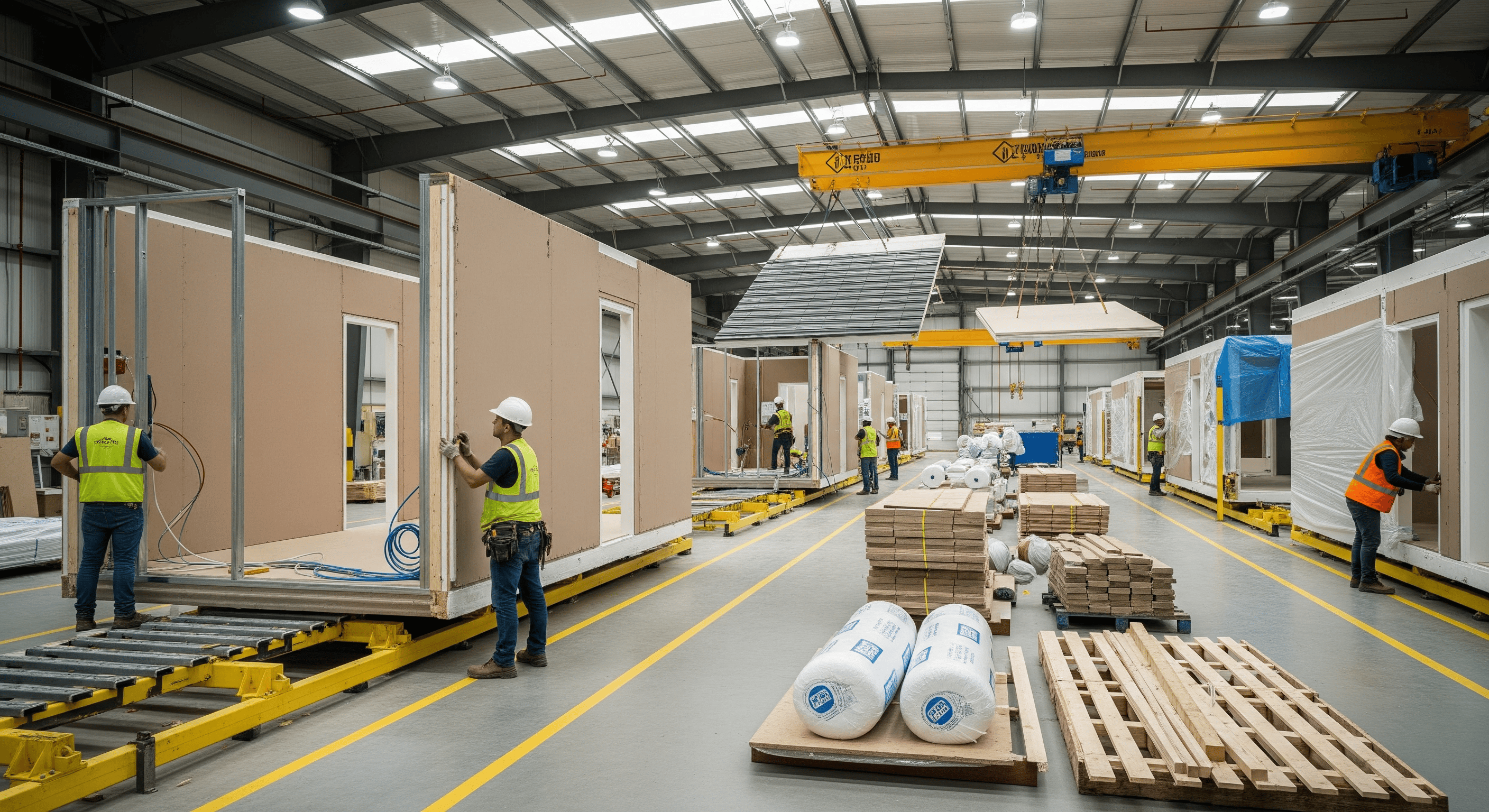Construction ERP
5 Ways ERP Can Improve Profit Margins in Prefabricated Construction
Last updated:
July 28, 2025

Imagine you’re running a prefabrication project. Everything is moving fast, but suddenly, you’re short on materials, or worse—you’ve ordered too much and now have piles of wasted supplies eating into your budget. Sound familiar?
Prefabrication is meant to be efficient, but surprise costs, supply chain disruptions, and scheduling errors can erode profit margins. That's where Enterprise Resource Planning (ERP) software comes into the picture. Consider ERP to be the brain of your operation—linking all the systems, keeping everything in order and optimized so you can build smarter, faster, and more profitably.
Let's have it broken down.
The Financial Challenges of Prefabricated Construction
High Material Costs and Waste Management
Materials aren’t cheap, and every bit of waste cuts into your bottom line. Without proper tracking, you could either over-order and end up with excess or under-order and delay production while waiting for new shipments. It’s a balancing act, and getting it wrong costs money.
Supply Chain Complexities in Off-Site Manufacturing
In contrast to conventional construction, wherein all things take place on-site, prefabrication depends on various suppliers, factories, and logistics teams all operating in harmony. One delay carries over to the entire project, making it difficult to remain on schedule and budget.
Labor Productivity and Project Efficiency Issues
Prefabrication is designed to be faster and more efficient, but the wrong scheduling, unforeseen bottlenecks, and communication failures between teams have a way of slowing everything down. If the labor isn't utilized efficiently, productivity falls, —and so do your profit margins.
How ERP Enhances Cost Control and Efficiency
1. Optimized Supply Chain Management
ERP systems provide end-to-end visibility of your supply chain, meaning you always have a clear view of what materials you have on hand, which ones are low, and which ones need to be ordered—without stockpiling or holding up production.
- Real-time monitoring of inventory eliminates material shortages.
- Automated buying minimizes over-ordering and waste.
- Just-in-time (JIT) inventory tactics save storage expense.
2. Enhanced Production Planning and Scheduling
Ever had a project stalled in limbo because one team was holding out for another? ERP keeps everyone on track using data-driven forecasting to automate production and save downtime.
- Predictive scheduling keeps machines and workers from sitting idle.
- Workflow automation accelerates assembly.
- Resource allocation software prevents bottlenecks.
3. Better Cost Tracking and Budget Control
Budget overruns don't occur overnight—they sneak up on you when minor expenses are overlooked. ERP averts this by providing real-time cost tracking and predictive analytics so you can identify overspending in time.
- Live cost tracking maintains spending in check.
- Automated budget forecasts keep overruns at bay.
- Integration with accounting systems provides a true financial picture.
4. Improved Project Collaboration and Communication
One of the largest problems in construction? Siloed teams. ERP keeps everyone in the loop, ensuring everyone—whether in the field or back at the office—is on the same page.
- Cloud-based access keeps teams real-time.
- Centralized document management eliminates miscommunication.
- Automated approvals ensure compliance without holding up projects.
5. Data-Driven Decision Making for Higher Profitability
Gut instincts are wonderful, but decisions based on data are preferable. ERP delivers AI-driven insights that enable you to price jobs correctly, maximize processes, and enhance efficiency in line with real-world performance.
- AI-based analytics enable optimized pricing and bidding.
- Performance monitoring enhances prefabrication processes.
- Analysis of historical data enables ongoing improvement.
The Future of ERP in Prefabricated Construction
ERP software is transforming quickly. With AI, machine learning, and IoT being embedded into the system, ERP solutions of the future will make prefabricated construction even more efficient, affordable, and scalable.
- Machine learning and AI will enhance cost estimation.
- IoT integration will provide real-time tracking of materials and assets.
- Automation will further accelerate and make prefabrication quicker and more accurate.
If you're in prefabricated construction and not yet leveraging ERP, you're leaving cash on the table. The proper ERP solution—such as MerlinAI—doesn't merely handle data; it revolutionizes how you construct, drive costs down, and maximize profit margins.
Ready to future-proof your construction enterprise? It's time to build smarter with ERP.
FAQ's
1. What problems does prefabrication often face without ERP software?
Without ERP, prefabrication projects commonly struggle with high material waste, unexpected costs, complex supply chain coordination leading to delays, and inefficient labor utilisation.
2. How does ERP help manage materials and supply chains in prefabrication?
ERP provides real-time visibility into inventory, automates ordering to prevent overstocking or shortages, and enables just-in-time (JIT) delivery, significantly reducing waste and storage costs.
3. Beyond materials, how does ERP improve project efficiency and profitability?
ERP enhances efficiency through predictive scheduling, workflow automation to prevent bottlenecks, real-time cost tracking for budget control, improved team collaboration, and data-driven insights for smarter decisions.
4. What's next for ERP in prefabricated construction?
The future of ERP in prefabrication will see deeper integration of AI, machine learning, and IoT for even more accurate cost estimation, real-time material and asset tracking, and further automation of processes, making construction even more efficient and scalable.





